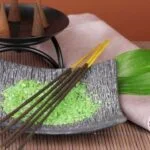How to make aromatherapy hand sanitizer is a popular query for those looking to enhance their hand cleansing routine with the natural and therapeutic benefits of essential oils. This article will explore the benefits and importance of incorporating essential oils into hand sanitizer, as well as provide a step-by-step guide on creating your own DIY aromatherapy hand sanitizer.
Aromatherapy hand sanitizer combines the cleansing properties of traditional hand sanitizers with the aromatic and antibacterial properties of essential oils. By using high-quality essential oils like lavender, tea tree, eucalyptus, and peppermint, you can create a more natural and therapeutic hand cleansing experience.
In addition to discussing the best essential oils for aromatic and antibacterial properties, this article will also cover the importance of choosing the right ingredients for an effective and safe hand sanitizer. Furthermore, safety precautions when handling essential oils and alcohol will be highlighted to ensure that readers can create their own aromatherapy hand sanitizer without risking skin irritation or other potential risks.
Essential Oils for Aromatherapy Hand Sanitizer
When it comes to making aromatherapy hand sanitizer, choosing the right essential oils is crucial for creating a pleasant fragrance and providing antibacterial properties. There are several essential oils that are known for their aromatic and therapeutic qualities, making them perfect for use in hand sanitizers. Lavender, tea tree, eucalyptus, and peppermint are among the best essential oils to use for aromatherapy hand sanitizer.
Here are some of the benefits and properties of these essential oils:
- Lavender: Known for its calming and soothing scent, lavender essential oil also has antimicrobial properties that can help kill bacteria and viruses on the skin.
- Tea Tree: Renowned for its potent antibacterial and antifungal properties, tea tree essential oil is a great addition to hand sanitizer for killing germs.
- Eucalyptus: With its refreshing and invigorating aroma, eucalyptus essential oil is both antibacterial and anti-inflammatory, making it a valuable choice for hand sanitizers.
- Peppermint: The cooling sensation of peppermint essential oil can provide a refreshing experience while also delivering germ-fighting properties.
When making your own aromatherapy hand sanitizer using these essential oils, it’s important to consider the desired scent profile as well as the specific benefits you want to achieve. Mixing different essential oils can also create unique blends that cater to individual preferences.
To learn more about how to make aromatherapy hand sanitizer with these essential oils, check out our DIY Aromatherapy Hand Sanitizer Recipe section for step-by-step instructions on creating your personalized blend.
DIY Aromatherapy Hand Sanitizer Recipe
Aromatherapy hand sanitizer is a great way to cleanse and protect your hands while also enjoying the aromatic benefits of essential oils. Making your own aromatherapy hand sanitizer is a simple and affordable alternative to commercially available options, allowing you to customize the scent and properties to suit your preferences. In this section, we will provide a step-by-step guide on how to make your own aromatherapy hand sanitizer using essential oils, aloe vera gel, and rubbing alcohol.
To make aromatherapy hand sanitizer at home, you will need the following ingredients:
- 2/3 cup of 99% isopropyl alcohol
- 1/3 cup of pure aloe vera gel
- 10-15 drops of your preferred essential oil (such as lavender, tea tree, eucalyptus, or peppermint)
- A small bowl and whisk for mixing
- A funnel for transferring the mixture into small bottles
- Small squeeze bottles for storing the hand sanitizer
Once you have gathered all the necessary ingredients and tools, follow these simple steps to create your own aromatherapy hand sanitizer:
- In a small bowl, combine the isopropyl alcohol and aloe vera gel.
- Add 10-15 drops of your preferred essential oil to the mixture. You can use a single oil or create a blend for added benefits.
- Use the whisk to thoroughly mix the ingredients until they are well combined.
- Place the funnel in the opening of each squeeze bottle and carefully pour the hand sanitizer into the bottles.
- Tightly seal the bottles with their caps and label them accordingly.
Making your own aromatherapy hand sanitizer allows you to control the quality of ingredients used while also tailoring it to your desired scent. By following this easy DIY recipe, you can enjoy both cleansing and therapeutic benefits in one convenient product.
| Ingredients | Measurements |
|---|---|
| Isopropyl Alcohol | 2/3 cup |
| Pure Aloe Vera Gel | 1/3 cup |
| Essential Oil | 10-15 drops |
| Squeeze Bottles | As needed |
Choosing the Right Ingredients
When creating aromatherapy hand sanitizer, one of the most important aspects to consider is the quality of the ingredients used. High-quality ingredients not only ensure the effectiveness of the hand sanitizer but also contribute to its safety for use. Here are some key points to consider when choosing the right ingredients for your DIY aromatherapy hand sanitizer:
- Essential Oils: When selecting essential oils for your hand sanitizer, it is crucial to choose pure, high-quality oils. Look for oils that are labeled as 100% pure and undiluted, as these will provide the best aromatic and antibacterial properties. Some of the best essential oils for hand sanitizer include lavender, tea tree, eucalyptus, and peppermint.
- Aloe Vera Gel: Organic aloe vera gel is an excellent ingredient to incorporate into your hand sanitizer recipe. Not only does it add moisturizing and soothing properties to the sanitizer, but it also helps to dilute the essential oils and alcohol for a gentler application on the skin.
- Rubbing Alcohol: When using rubbing alcohol as part of your hand sanitizer recipe, opt for at least 60% alcohol content to ensure its effectiveness in killing germs and bacteria.
Using high-quality ingredients ensures that your aromatherapy hand sanitizer not only effectively cleanses your hands but also provides therapeutic benefits through aromatherapy. By selecting pure essential oils and organic aloe vera gel, you can create a safe and natural hand sanitizer that promotes overall well-being.
When making your own aromatherapy hand sanitizer, it’s important to prioritize safety by choosing high-quality ingredients. Additionally, by ensuring that all components are pure and free from harmful additives, you can craft a product that contributes to your health and wellness while minimizing potential risks.
Overall, taking the time to carefully select premium ingredients will result in a high-quality aromatherapy hand sanitizer that offers both effective cleansing properties and therapeutic benefits through its aromatic qualities.
Safety Precautions
When creating aromatherapy hand sanitizer, it is essential to consider the safety precautions necessary when handling essential oils and alcohol to avoid any potential risks or skin irritation. While essential oils offer numerous therapeutic benefits, they are also highly concentrated and can cause adverse reactions if not used properly.
Additionally, rubbing alcohol, which is a key ingredient in hand sanitizers, can be harsh on the skin if not handled with care. Therefore, understanding and implementing the necessary safety measures is crucial to ensure a safe and enjoyable aromatherapy experience.
Proper Dilution of Essential Oils
One of the most important safety precautions when using essential oils in hand sanitizer is proper dilution. Undiluted essential oils can cause skin irritation, allergic reactions, or even chemical burns. It is recommended to follow a specific dilution ratio when incorporating essential oils into hand sanitizer.
Generally, a 2% dilution rate is considered safe for most adults, which equates to approximately 12 drops of essential oil per ounce of carrier substance. However, some essential oils may require even lower dilution rates due to their potency and potential for skin sensitivity.
Handling Alcohol Safely
Rubbing alcohol (isopropyl alcohol) is an effective disinfectant in hand sanitizers but must be handled with care to avoid skin irritation or other potential risks. When working with rubbing alcohol, it is important to use it in a well-ventilated environment to prevent inhaling its fumes.
Moreover, direct contact with undiluted alcohol can dry out the skin and cause irritation, so it’s crucial to wash hands thoroughly after handling it. Additionally, keeping rubbing alcohol away from heat sources or open flames is vital due to its flammability.
Skin Patch Testing
Before using any homemade aromatherapy hand sanitizer on a larger area of the skin, performing a patch test is highly recommended. This involves applying a small amount of the diluted hand sanitizer on a small area of the skin and observing for any adverse reactions over 24-48 hours. This precaution helps identify any potential sensitivities or allergies to the ingredients before full application and reduces the risk of widespread skin irritation or discomfort.
By following these safety measures when handling essential oils and rubbing alcohol for making aromatherapy hand sanitizer, individuals can enjoy the benefits of natural cleansing and therapeutic effects while minimizing potential risks to their well-being.
Aromatherapy Hand Sanitizer Application
Proper Application Techniques
When using aromatherapy hand sanitizer, it is important to ensure that you are applying it properly for maximum effectiveness. Begin by squirting a dime-sized amount of the sanitizer onto the palm of your hand. Rub your hands together, making sure to cover all surfaces, including between your fingers, around your nails, and the backs of your hands.
Continue rubbing for at least 20-30 seconds or until the sanitizer has completely evaporated. Remember not to wipe off any excess as this may reduce its antibacterial effect.
Using Aromatherapy Hand Sanitizer Throughout the Day
To keep yourself protected from germs and experience the full benefits of aromatherapy throughout the day, it’s important to use the hand sanitizer regularly. Consider applying it after touching high-contact surfaces like doorknobs, elevator buttons, or grocery carts. Additionally, use it before eating or touching your face to minimize the risk of transferring bacteria and viruses.
Aromatherapy Benefits
In addition to its antibacterial properties, aromatherapy hand sanitizer provides added benefits through inhalation of essential oils. The soothing aroma of lavender can help reduce stress and anxiety while promoting relaxation. Similarly, eucalyptus and peppermint oils may assist in clearing sinuses and providing a refreshing feeling. By taking deep breaths after applying the hand sanitizer, you can fully experience these aromatic benefits while also enjoying clean and germ-free hands.
By following these tips on how to properly apply aromatherapy hand sanitizer and incorporating it into your daily routine, you can reap both the cleansing and therapeutic benefits it offers.
Benefits of Aromatherapy Hand Sanitizer
Aromatherapy hand sanitizers offer a range of benefits beyond just cleansing and disinfecting the hands. The incorporation of essential oils in these sanitizers provides additional therapeutic advantages, including stress relief, mood enhancement, and immune support. By understanding the potential benefits of using aromatherapy hand sanitizer, individuals can make more informed choices about their personal hygiene products.
One of the key benefits of aromatherapy hand sanitizer is its ability to promote stress relief. Essential oils such as lavender and chamomile are known for their calming properties, which can help alleviate feelings of stress and anxiety. When used in hand sanitizer, these oils can provide a moment of relaxation during the day while effectively cleaning the hands.
In addition to stress relief, aromatherapy hand sanitizer can also enhance mood. Essential oils like citrus (e.g. lemon or orange) and peppermint are often used for their uplifting and invigorating scents. Incorporating these oils into hand sanitizer can help improve mood and mental clarity, making it a refreshing experience each time the product is used.
| Aromatherapy Oil | Benefits |
|---|---|
| Lavender | Promotes relaxation and stress relief |
| Citrus (e.g. lemon or orange) | Enhances mood and provides an invigorating scent |
| Peppermint | Uplifting fragrance that boosts mental clarity |
Moreover, certain essential oils have antimicrobial properties that may provide additional immune support when used in hand sanitizer. Oils like tea tree and eucalyptus have been traditionally recognized for their antibacterial and antiviral properties, potentially offering an extra layer of protection in addition to alcohol-based sanitizing ingredients.
Overall, incorporating aromatherapy into hand sanitizer not only enhances the olfactory experience but also provides holistic wellness benefits that contribute to a healthier lifestyle. Whether creating homemade blends or purchasing commercially crafted products, individuals can look forward to a more sensory-rich and beneficial experience with each use.
Conclusion and Recommendations
In conclusion, aromatherapy hand sanitizer offers a natural and therapeutic alternative to traditional hand sanitizers. By incorporating essential oils with aromatic and antibacterial properties, such as lavender, tea tree, eucalyptus, and peppermint, individuals can enjoy the cleansing benefits while also experiencing stress relief, mood enhancement, and immune support. The DIY recipe for aromatherapy hand sanitizer using essential oils, aloe vera gel, and rubbing alcohol provides an easy and cost-effective way to create personalized sanitizers at home.
When making aromatherapy hand sanitizer at home, it is crucial to use high-quality ingredients such as pure essential oils and organic aloe vera gel to ensure its effectiveness and safety. Additionally, proper safety precautions must be followed when handling essential oils and alcohol to prevent skin irritation and other potential risks. By following these guidelines on how to make aromatherapy hand sanitizer safely and effectively at home, individuals can enhance their cleansing routine with the added benefits of aromatherapy.
For those who prefer not to make their own aromatherapy hand sanitizer or are looking for ready-made options for personal use or as gifts, there are various reputable brands that offer pre-made sanitizers infused with essential oils. When purchasing pre-made products, it is important to carefully read the labels to ensure the use of high-quality ingredients and the absence of harsh chemicals.
Whether purchasing or creating aromatherapy hand sanitizers, individuals can enjoy the benefits of natural cleansing combined with the therapeutic properties of essential oils.
Frequently Asked Questions
How Do You Make Scented Hand Sanitizer?
Scented hand sanitizer can be made by adding a few drops of essential oils, such as lavender or eucalyptus, to a base of unscented hand sanitizer. Simply mix the two together thoroughly to distribute the fragrance evenly.
Can You Mix Essential Oils Into Hand Sanitizer?
Yes, essential oils can be mixed into hand sanitizer to add fragrance. However, it’s important to use pure essential oils and not fragrance oils, as the latter may not mix well with the sanitizer and could leave a sticky residue on your hands.
How Do You Add Fragrance to Hand Sanitizer?
To add fragrance to hand sanitizer, simply mix in a few drops of essential oil of your choice and stir well to ensure an even distribution of the scent. It’s important not to overdo it, as too much oil can make the sanitizer less effective.
Also, consider using calming scents like lavender or peppermint for a soothing effect on your hands.

Are you looking for a natural way to improve your health and wellbeing?
If so, aromatherapy may be the answer for you.





